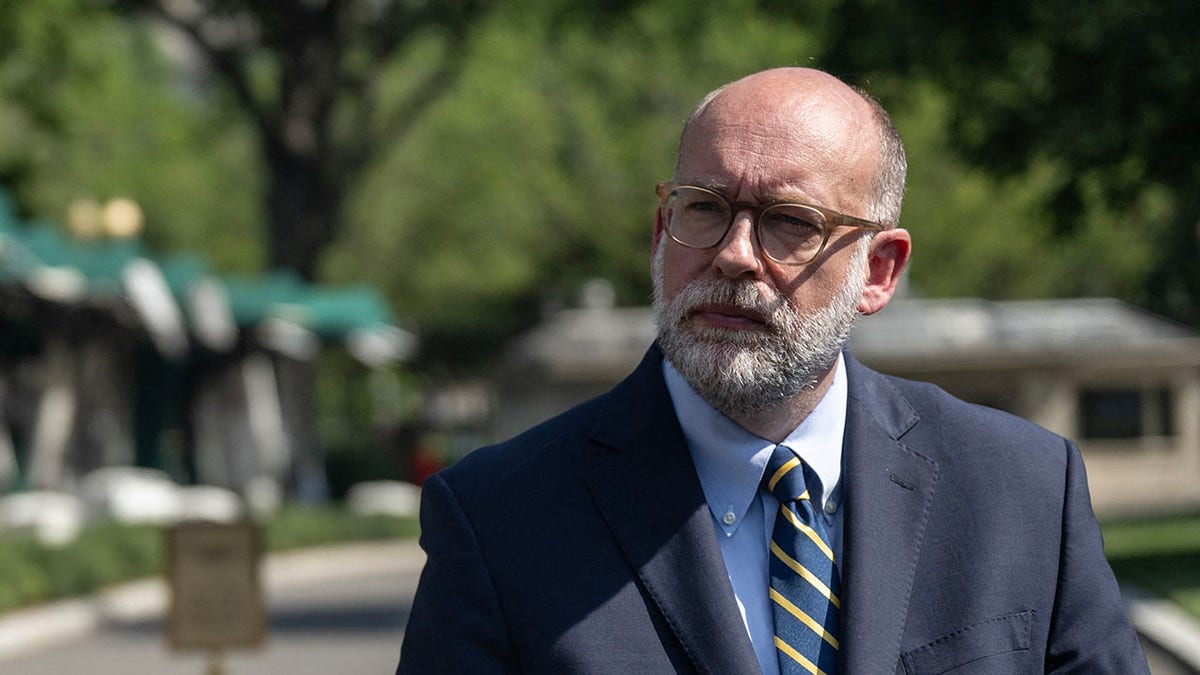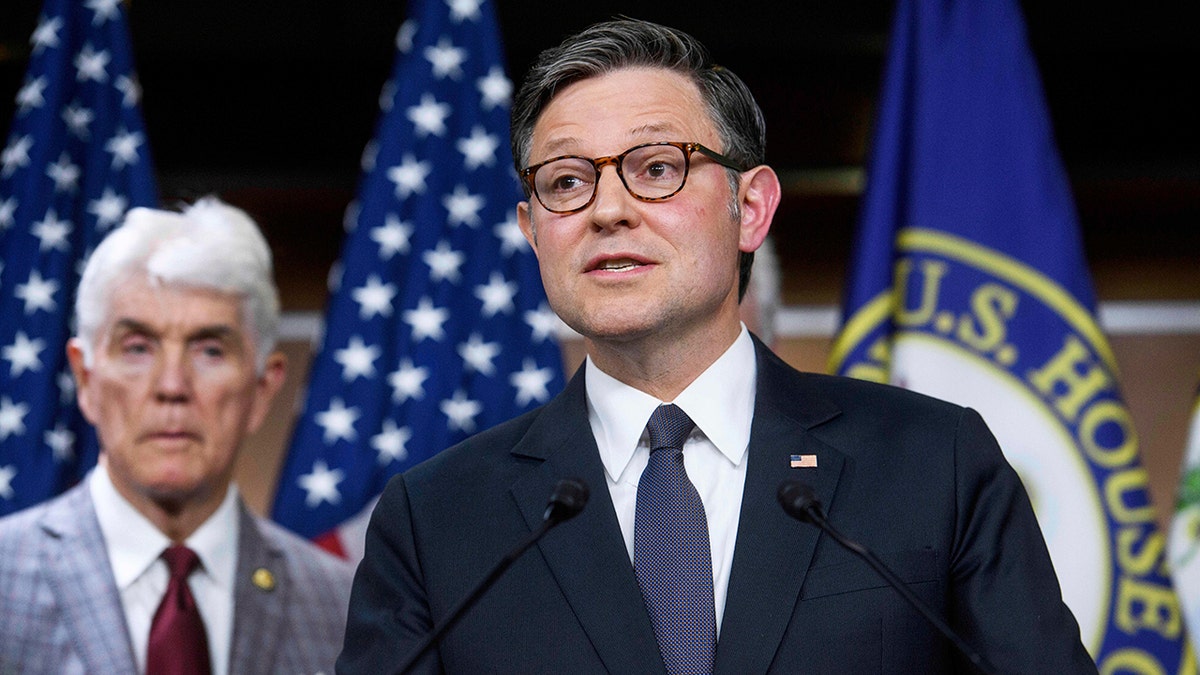NEWYou can now listen to articles!
House Republicans on the Appropriations Committee are at odds with the Trump administration and some conservatives over how long a stopgap spending bill should last, with just weeks left to avert a government shutdown.
Congress is currently marking up fiscal 2026 spending levels, but some in the administration are pressing to bypass the process and instead extend current levels through a year-long continuing resolution (CR).
Republicans broadly agree some form of CR will be needed to avoid a partial shutdown when fiscal 2025 ends on Sept. 30, but the length of that CR has become a point of friction, frustrating appropriators who argue their work is being undermined.
A Trump administration official told Digital that appropriators’ complaints were “nonsense,” arguing they are simply unhappy with the funding levels the administration had proposed.
FAR-LEFT FIREBRAND SAYS SHE ‘NEVER HAD A CONCERN’ ABOUT BIDEN’S MENTAL STATE AS HOUSE PROBE HEATS UP
Republicans in Washington are divided over a government funding strategy as the Sept. 30 deadline to avert a shutdown looms large. ( Digital photo illustration)
The White House is in favor of a clean CR stretching into the new year, while one House lawmaker said appropriators would like a stopgap that was “as short as possible.” Some conservative lawmakers have even argued for a bill lasting at least the full fiscal year.
Committee member Rep. Ryan Zinke, R-Mont., called the idea of a long-term measure “very frustrating.”
“As a member of Appropriations, where you do an enormous amount of work, and it leads to a continuing resolution because that’s easier…I’m deeply concerned that we will roll over and not do our job,” Zinke told Digital.
Senior appropriator Rep. Mario Diaz-Balart, R-Fla., predicted “a very short-term CR,” but he warned a year-long measure “would be devastating for the country.”
“The concept that Republicans control the House, Senate and the White House, and we would somehow be stuck with the last Biden [budget] for a second year, to me, is preposterous,” Diaz-Balart said, adding that the push for a year-long measure “is not coming from appropriators.”
Other committee Republicans echoed those concerns and issues with what they saw as a lack of direction from top officials on a top-line spending number.
The Trump administration official said accusations that House appropriators were not given enough direction from leaders are “completely false,” however, and said the White House was engaged in monthly and weekly conversations with lawmakers relevant to the process.

Russ Vought, director of the Office of Management and Budget (OMB), speaks to reporters outside the West Wing of the White House on July 17, 2025, in Washington, D.C. (ANDREW CABALLERO-REYNOLDS)
“The frustrating part is we don’t have a top line yet,” Rep. John Rutherford, R-Fla., said.
One GOP lawmaker, granted anonymity to speak candidly, said, “We’re sort of flying blind right now, trying to get something done and across the finish line without really having a direction on what leadership wants, or frankly, what the president wants.”
Another House Republican pointed to Russ Vought, director of the Office of Management and Budget (OMB), accusing him of delaying the administration’s proposed budget until early May to build support for a year-long CR.
“That’s what Russ Vought wants. He wants a year-long CR,” that lawmaker said. “There’s enough appropriators who won’t allow that. That will fail.”
It’s not uncommon for administrations to unveil their budget proposals after the traditional early February deadline, however. The Biden administration similarly let its budgets slip past the Feb. 15 deadline, including fiscal 2022, when its proposal was not released until late May.
In 2018, during the Obama administration, no White House budget was proposed at all.
House Freedom Caucus Chair Andy Harris, R-Md., told Digital he supports going even further with a CR that stretches into December 2026.
“Why put us through the misery next September?” Harris said. “The American people shouldn’t be subjected to the question of whether or not Chuck Schumer wants to shut down the government for the election.”
GOP LAWMAKERS CLASH OVER STRATEGY TO AVERT GOVERNMENT SHUTDOWN CRISIS

House Speaker Mike Johnson, R-La., speaks during a news conference at the Capitol on May 6, 2025, in Washington. (AP Photo/Rod Lamkey, Jr., File)
House Appropriations Committee Chair Tom Cole, R-Okla., for his part, said he would like to see a CR into November. And while he said there were “a lot of people” who could share blame for the current situation, he was hesitant to single any one party out.
“The top-line number, that wasn’t done this year, the president’s budget was late in arriving, and I think Democrats are still flustered by President Trump and aren’t sure whether they should deal with him or fight him at every step,” he said.
Cole also said of the White House’s proposal, “There’s some discussion about going as far as the first quarter. That’s not coming from the appropriators, but it is coming out of the White House. I’m willing to work within any time frame my leadership gives me. I don’t want a government shutdown. I want a bipartisan deal.”
In March, with the White House’s support, Congress passed a CR through Sept. 30 that extended fiscal 2024 spending levels, with some increases for defense funding.
The White House has since acted to rescind some of those funds, chiefly aimed at foreign aid and public broadcasting.
It’s soured bipartisan government spending talks with Democrats, who have warned they will not agree to any spending deal without assurances that more funding rescissions would not happen.

House Appropriations Committee Chair Tom Cole said he would want to see a CR into November. (Getty Images)
A White House official told reporters on a recent call, however, that they believed a clean CR for “however length” would put Democrats in a politically tricky situation and pin the blame for a shutdown on them if they reject the measure.
Speaker Mike Johnson, R-La., has privately signaled support for a short-term clean CR, two sources told Digital. Democrats have indicated openness to that approach.
CLICK HERE TO GET THE APP
When reached for comment, a spokesperson for Johnson pointed Digital to recent comments in Punchbowl News that he understood both sides of the argument. “There are reasonable people on both sides who understand this is a basic function and responsibility of the government, so we’re working towards that,” he said.
House Minority Leader Hakeem Jeffries, D-N.Y., said Tuesday he had an “opening conversation” with Johnson on funding.
With just 11 joint House and Senate working days left before the Sept. 30 deadline, lawmakers are racing to avoid another shutdown showdown.












